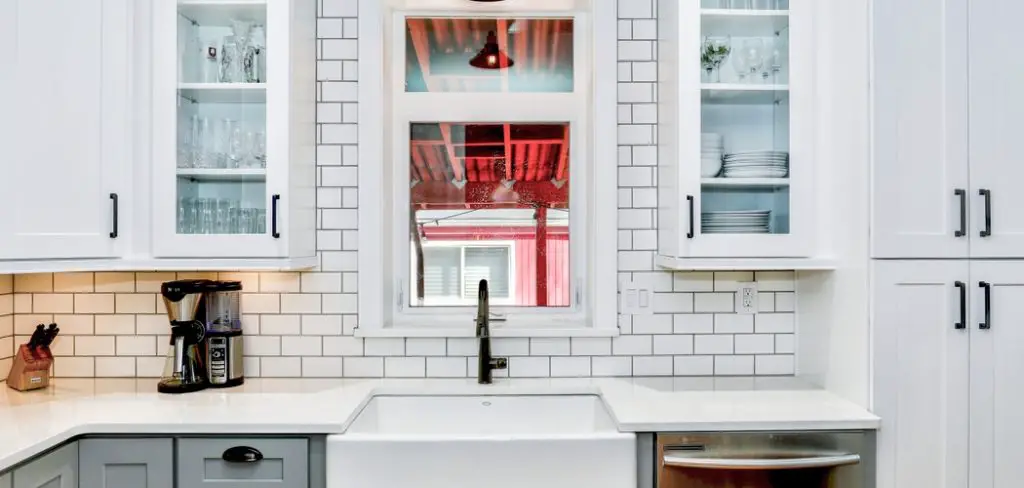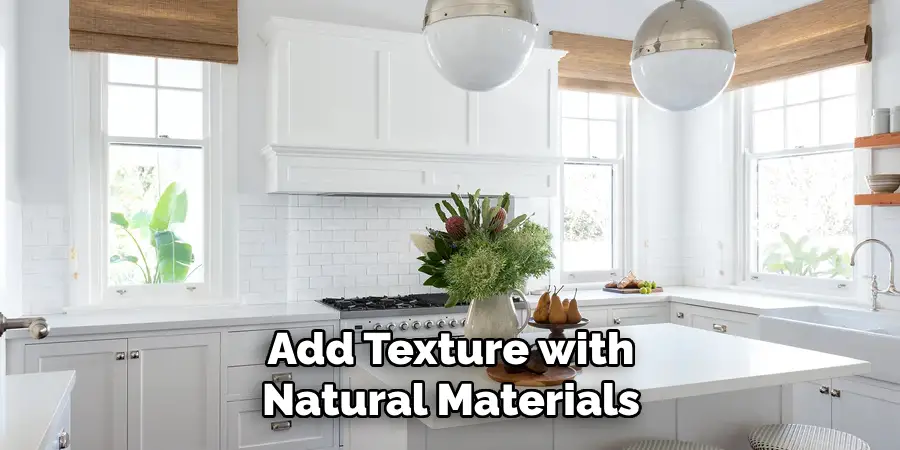A white kitchen offers a timeless and clean aesthetic, but without the right elements, it can sometimes feel cold or sterile. To transform it into a welcoming and cozy space, thoughtful design choices are essential. This guide will walk you through how to warm up a white kitchen, providing tips and techniques to help simplify the task.

By incorporating various textures, colors, and materials, you can infuse warmth and character into your white kitchen. This introduction will explore effective strategies to achieve a harmonious balance between elegance and comfort, allowing your kitchen to be both a functional and inviting hub of your home.
The Popularity of White Kitchens
White kitchens have remained a popular choice for homeowners and designers due to their versatility and timeless appeal. The color white provides a blank canvas that pairs effortlessly with any style, whether it’s modern, traditional, or rustic. This adaptability allows for easy updates as trends change, with minimal effort required to refresh the look.
Additionally, white kitchens often give the impression of a larger, more open space, making them a preferred option for smaller areas or homes seeking an airy feel. The aesthetic neutrality of white ensures that personal accents, like colorful backsplash tiles or assorted countertop appliances, can shine without overwhelming the overall design. This classic choice can adapt to various décor elements, making it a perennial favorite among kitchen design enthusiasts.
10 Methods How to Warm up a White Kitchen
1. Incorporate Warm Wood Tones
One of the most effective ways to warm up a white kitchen is by introducing warm wood tones. Wooden elements can be added through cabinetry, open shelving, countertops, or even small details like cutting boards or bar stools. Opt for rich, natural wood tones like walnut, oak, or cherry to contrast with the crisp white. If you prefer a more subtle approach, even lighter woods like ash or birch can add warmth while maintaining a cohesive, modern look. The organic texture of wood breaks up the starkness of white, creating a welcoming and lived-in feel.

2. Use Warm Metal Accents
Metal finishes are a great way to add warmth and dimension to a white kitchen. Choose warm metals like brass, copper, or gold for hardware, light fixtures, faucets, and other accents. Brass or gold cabinet handles, for instance, can instantly elevate the look of your kitchen and give it a touch of luxury. Copper pendant lights or a statement faucet can introduce a soft, warm glow that complements the white backdrop beautifully. These metals create a sense of depth and warmth without overwhelming the simplicity of the space.
3. Add Texture with Natural Materials
Incorporating natural materials into a white kitchen is another way to add warmth and interest. Think of materials like stone, marble, or clay, which have a tactile quality that contrasts with smooth white surfaces. A stone backsplash or marble countertops, for example, can provide a subtle visual texture while adding elegance.
Even small touches like woven baskets, ceramic vases, or clay pots for plants can introduce warmth through texture. These natural elements soften the overall look, making the space feel more inviting and less stark.

4. Incorporate a Warm Color Palette in Accessories
Though the foundation of the kitchen may be white, you can easily introduce warmth through colorful accessories. Consider adding warm, earthy tones like terracotta, mustard, rust, or deep greens in your kitchen décor. This could include items like dish towels, decorative bowls, or even small appliances like a retro toaster or mixer in a warm hue.
These touches of color break up the white and add vibrancy to the space without overwhelming the neutral base. For a cohesive look, choose one or two accent colors and repeat them in various elements throughout the kitchen.
5. Introduce Patterned or Textured Backsplashes
A backsplash is an excellent opportunity to introduce warmth and personality into a white kitchen. Opt for a backsplash with a warm tone or pattern to add visual interest. Subway tiles in shades of beige, soft gray, or even blush can warm up the space while maintaining the clean lines of a modern kitchen. Alternatively, consider a textured tile, like handmade or encaustic tiles, which add depth and dimension. A patterned tile backsplash can also bring in warmth through design, adding a sense of artistry and craftsmanship to the room.

6. Install Warm Lighting
Lighting is a crucial factor in making a white kitchen feel warm and inviting. Cool, harsh lighting can make an already bright kitchen feel even colder. To counteract this, opt for warm, ambient lighting. Pendant lights with a warm metal finish, dimmable recessed lights, or under-cabinet lighting can create a soft glow that enhances the warmth of the space. Installing light fixtures with bulbs that emit warm tones (such as those labeled “soft white” or “warm white”) is another easy way to create a cozy atmosphere. The lighting should feel layered and adjustable to create the perfect mood at different times of day.
7. Layer in Cozy Textiles
Textiles are an easy and inexpensive way to bring warmth and coziness into a white kitchen. A plush rug in front of the sink or a runner along the kitchen aisle can add softness underfoot while introducing color and texture. Opt for textiles in natural fibers like wool, cotton, or jute in warm tones or earthy patterns. Even small items like dish towels, oven mitts, or upholstered bar stools can incorporate warmer elements through fabric, enhancing the comfort and warmth of the room.
8. Add Greenery and Natural Plants
Adding plants or greenery is an excellent way to breathe life into a white kitchen and make it feel warmer. Plants introduce color and texture while providing a natural, organic contrast to the white palette. Small potted herbs on the windowsill, a hanging plant, or a large potted tree in the corner can all bring a burst of green freshness. Choose planters in warm, natural materials like terracotta, wood, or woven baskets to enhance the earthy vibe. Not only do plants add warmth, but they also improve air quality and make the kitchen feel more lively and inviting.

9. Display Art or Personal Décor
A white kitchen can sometimes feel impersonal, but displaying art or personal décor is a wonderful way to add warmth and character. Choose artwork that complements your color scheme, such as abstract pieces in warm tones, or consider framed botanical prints, vintage posters, or family photos. Leaning framed art against the backsplash or hanging a gallery wall near your dining area adds a personal touch that makes the kitchen feel more like home. Even displaying personal items, such as handmade pottery, vintage kitchen tools, or a collection of cookbooks, can introduce a lived-in warmth that balances the crispness of a white kitchen.
10. Mix in Rustic or Vintage Pieces
Mixing in rustic or vintage elements can create a warm, lived-in feel in a white kitchen. Vintage finds, such as a farmhouse table, antique breadboards, or vintage light fixtures, add character and charm that soften the modernity of a white space. You could also include rustic wood elements, like open shelving made from reclaimed wood or a butcher block countertop. These pieces provide a sense of history and personality, creating a welcoming environment that contrasts with the pristine look of an all-white kitchen.
Things to Consider When Designing a White Kitchen
When designing a white kitchen, it’s important to strike the right balance between aesthetics and functionality. Consider the practicality of maintaining a pristine white space, as it may require more frequent cleaning to keep surfaces looking their best. Additionally, think about the amount of natural light your kitchen receives; white spaces can often benefit from ample sunlight, but adding window treatments that allow for adjustments in lighting can provide versatility. Reflect on the kitchen’s overall flow and how colors and textures blend across different rooms in your home, ensuring a harmonious transition.
Common Mistakes to Avoid
While designing a white kitchen can result in a timeless and elegant space, there are several common mistakes to avoid to ensure it doesn’t feel sterile or uninviting. One frequent misstep is neglecting to incorporate varying textures and materials. Without these elements, a white kitchen can appear flat and lifeless. Additionally, failing to include elements of warmth, such as wood accents or warm-colored accessories, may result in a cold, uninviting atmosphere.
Another mistake is relying solely on overhead lighting, as this can create harsh shadows and a clinical feel—layering different types of lighting is crucial for ambiance. Furthermore, omitting personal touches and decor can make the kitchen feel impersonal and devoid of character. Finally, overusing purely modern elements without any contrast or character can make the kitchen feel unbalanced; introducing vintage or rustic accents can help in creating a more cohesive and welcoming environment.
Conclusion
Warming up a white kitchen doesn’t mean compromising its bright and fresh aesthetic. By incorporating natural materials, warm tones, cozy textiles, and personal décor, you can create a space that feels inviting and comfortable. Whether through the addition of wood, greenery, or carefully chosen accessories, these design elements help balance the coolness of white, transforming the kitchen into a warm and welcoming hub for cooking, entertaining, and everyday life. Follow these simple instructions outlined in this blog post about how to warm up a white kitchen, and you’ll be able to get the job done with ease.

